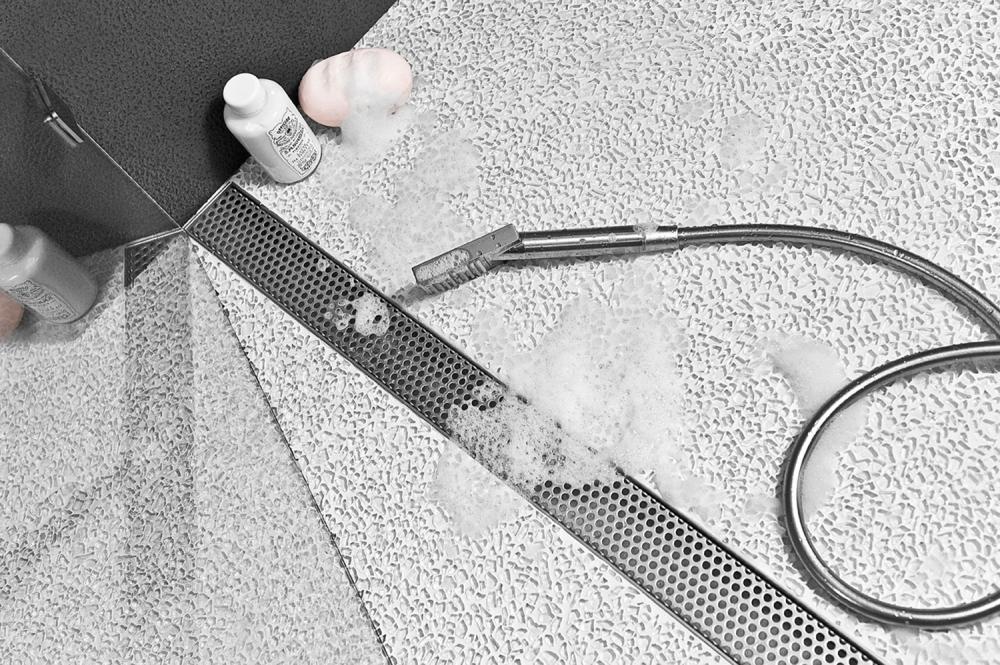
Cleaning Stainless Steel and Blocked Drains
Quick & easy tips
Retaining a shiny finish on stainless steel surfaces is just a matter of a few simple steps.
You don't need expensive products or special equipment – ordinary household cleaners are usually all that's required.
You just need to bear in mind a few easy DOs and DON’Ts …
Stainless steel looks best if it's cleaned regularly with plenty of water. Drying the surface with a soft cloth afterwards makes sure streaky marks aren't left behind.
Simply wiping with a damp cloth is not as effective as it can smear dirt without removing it. If you routinely clean stainless steel it prevents any stubborn stains from building up.
So, what will you need?
For day to day cleaning, plenty of water, some mild detergent and a cloth or soft brush will do the job.
Don't use bleach – it's just too easy to make the solution too strong and too hard to rinse it properly afterwards.
After washing, rinse in clean water and wipe the surface dry with a soft absorbent cloth. On brushed stainless steel, follow the direction of the polish for best results.
An excellent cloth to use is the White Magic Eco Cloth for Stainless Steel.
Watch out for scratches!
The important thing to remember is that stainless steel can be scratched by careless handling or aggressive scrubbing. Just like you would take care of a polished timber finish, avoid dragging rough items across the surface and be aware that grit trapped under other objects can be the culprit.
Fingerprints, oil & grease marks
If a mild detergent or dishwashing detergent doesn't shift unsightly fingermarks, get rid of them with a bit of glass cleaner on a soft cloth, if that doesn’t work mineral turpentine. Then rinse with clean water and dry. After using turpentine lightly rub it with olive oil or baby oil followed by a polish and shine using a soft cloth.
NEVER EVER use steel wool (wire wool) to clean stainless steel. It is usually made of carbon steel and any fragments left behind will rust onto the stainless steel surface. Using any kind of scourer which has previously been used on ordinary (carbon) steel is also a no-no for the same reason.

You’ve got a shiny grate, but what’s that smell?
If your bathroom drains smell, you are certainly not alone. It’s a common problem – but one which you can easily solve before it gets out of hand.
So, what causes the stench?
In bathrooms, hair is most likely the culprit, it has probably been washed down the drain, resulting in a blockage that eventually causes a smell.
here’s what to do….
Run the tap and leave it for 20mins this will give it enough time to break down whatever is clinging to the side of your pipes. Heat up some water to just below boiling, when at least 20 mins has passed, pour the water carefully down the drain, being careful that none splashes onto you.
Run the tap again; if the water runs freely down the drain, success! If not, repeat the process again. Run the tap for a while to wash the excess down
Still having trouble?
Time to try a soluble solution. Pour a measure of baking powder down the drain. After waiting a while, pour down an equal amount of vinegar. Watch for hissing as the two substances will react, and (hopefully) break down the rest of whatever is down there. Now let the tap run again to flush it all away.
If that doesn’t work, it’s time to try some commercial drain cleaners, but many plumbers will tell you that it should only be used as a ‘last’ resort.
Still no luck?
It’s time to remove the drain cover.
And you’ll want to get some gloves.
You’re going to have to try and remove the culprit manually, chances are, once you remove the cover you’ll see the blockage build-up and be able to easily remove it.
Handy hint:
Get a cheap nylon slotted spoon for a few dollars that you an easily bend to help you scoop out the nasty build up, however be careful that you don’t push the blockage further down the pipe.
A cheap nylon slotted spoon is a good option as you can bend it by hand and then just throw it away after you’ve finished, other people sometimes use cheap tongs.
Important Tip:
Put the offending blockage into a bucket and throw it out into the bin, don’t put it into the toilet as you’ll just increase the chances of getting another blockage again.
Once the blockage has been cleared out, run the tap for 5 to 10 mins to clear the drain
If all that fails it is time to call a plumber, they’ll most likely use a snake as something may be blocking the drain beyond your reach.
